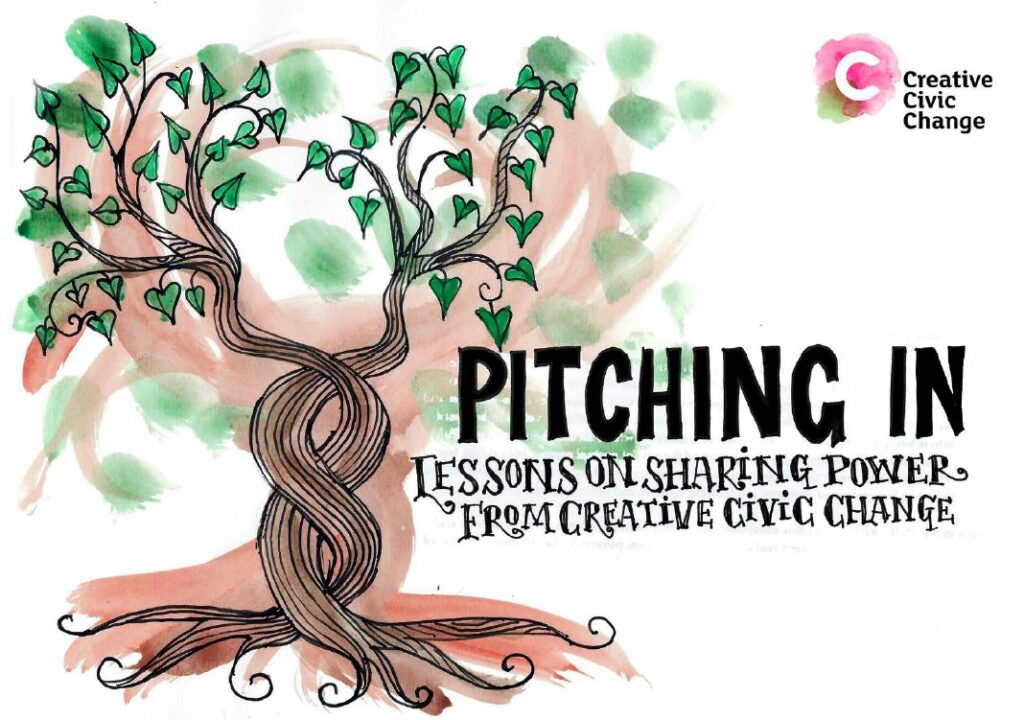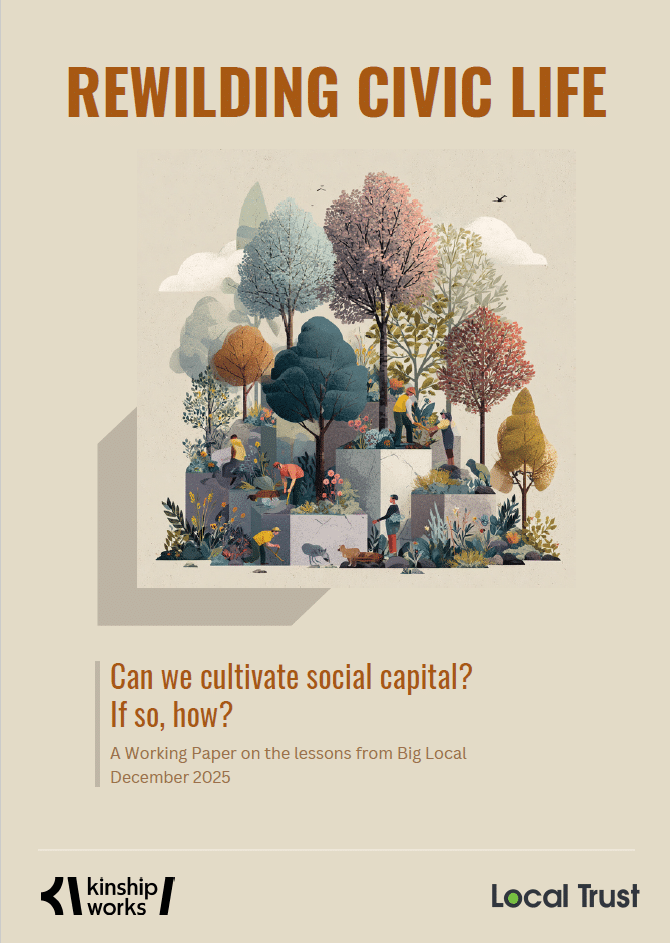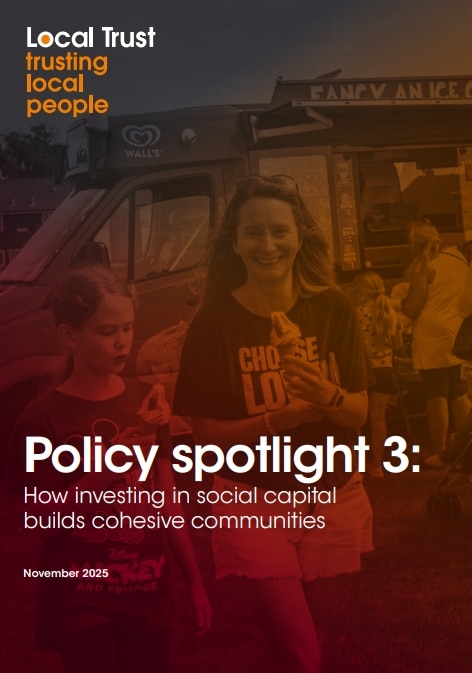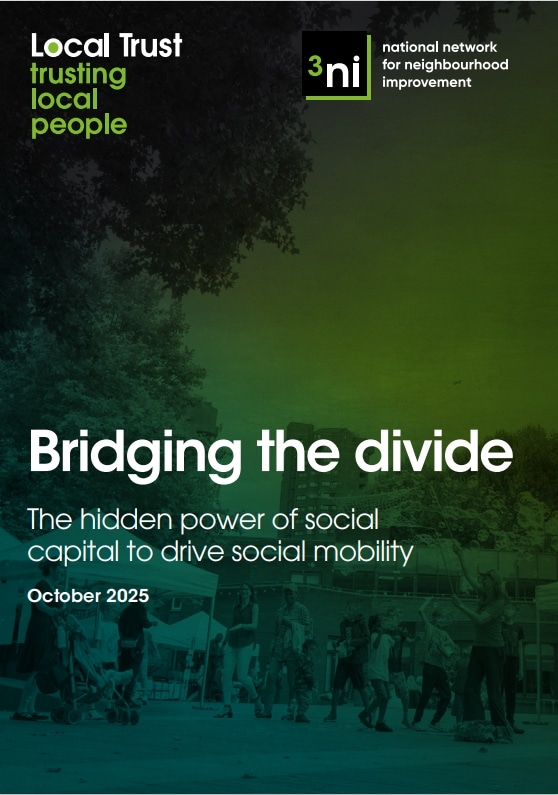Pitching in: Lessons on sharing power from Creative Civic Change
Pitching In looks at how community leadership is happening in practice; what helps and what gets in the way, and what difference this approach has made to those involved.

Pitching In is the third in a series of reports sharing the learning from Creative Civic Change (CCC) – an experimental funding programme delivered by Local Trust, The National Lottery Community Fund, Esmée Fairbairn Foundation and the Calouste Gulbenkian Foundation.
Modelled on the Big Local programme, CCC offers flexible, long-term funding, in-area mentoring and a substantial peer learning programme to 15 communities across England.
One of the underlying principles of Creative Civic Change is putting power in the hands of communities. Power to use creativity to bring positive social change to their neighbourhoods – to make improvements that are importance to them, in ways that work for them.
Pitching In looks at how this community leadership is happening in practice; what helps and what gets in the way, and what difference this approach has made to those involved.
Pitching In is written by the evaluation team of Sarah Boiling, Anousheh Haghdadi from Beatfreeks Consulting, and Amanda Smethurst. The natural world, ideas of ecosystems, listening and connections are ever present in our conversations with the CCC projects, so we took the liberty of adapting the principles of permaculture to structure the report, with sections on Curiosity, Relationships and Connections, Sustainability, and Diversity and Creativity.
The four themes
Creative Civic Change projects have put communities in the lead by investing in long term caring, yet Curious conversations. Always asking What’s needed? What’s wanted? What’s working? What’s changing?. This happens in both formal and informal ways. Working Groups, described as “a space where people feel safe and heard, seeing everyone as a leader” are a key mechanism for many projects, whilst others spend time having more informal and ongoing conversations.
Relationships and connections are the cornerstones of sharing power; and Creative Civic Change projects spend a lot of time and energy in creating and maintaining these relationships. Trust is crucial, and the projects have found that transparency and delivering on your promises are key in building trust. Confidence is needed too; supporting people so they feel confident to step into leadership roles. Providing a variety of ways for people to contribute – on their own terms – is vital, and this flexibility is also apparent in how Working Groups have evolved and adapted over time. It’s important to recognize that developing and maintaining these relationships and connections isn’t easy; there are tensions around power, where it sits and who uses it; and it can be difficult for experts, professionals and artists to step aside and let others make decisions.
The third principle in our report is Sustainability; with money, time and people identified as the key resources that are needed for sustainable community leadership. CCC projects experience first hand structural inequalities around poverty and ill health that impact on residents capacity to lead. These wider forces that are beyond their control, as well as notions of volunteering and expecting people to work for free, and navigating the messiness of human relationships are the key challenges to creating sustainable community leadership.
Diversity and Creativity is the fourth principle; and our research suggests that when CCC projects have been able to place marginalized groups and voices at the centre of their work; when they have brought artists and community members together around the leadership table; and when they have found ways to collectively develop a community imagination – they have found bold, brave and surprising ways to respond to communities needs and desires.
What difference have these approaches to community leadership made?
Pitching In illustrates how this approach to community leadership has impacted on those involved; it has enabled individuals to realise their own leadership potential; it has demonstrated the power of collective leadership; and it has developed people’s cultural capital. It has been a game changer for many of the organsiations facilitating these projects; transforming their practice around decision-making, consultation, and relationships. We also found that CCC projects are increasingly having an impact on stakeholders (such as local authorities, parish councils and funders) in their local area who have witnessed this different approach to power and decision making.
We think there is lots of learning from Creative Civic Change to share with funders, community and arts organisations around:
- Fostering curiosity through valuing and resourcing long term conversations in communities and adopting an action research approach.
- Prioritising connection by investing in value led governance and systems and building responsive support structures.
- Re-thinking sustainability by budgeting for ‘hidden’ costs, making budgets more transparent, reducing bureaucracy, and offering the longest term funding possible.
- Embedding diversity and creativity by championing innovative and practical solutions to barriers to inclusivity and explicitly embedding artists time and contribution in programme budgets and plans.
Pitching In also includes a couple of poems by Jayne Hipgrave from one of the CCC projects (Creative Par Bay). Jayne was inspired by a community leadership discussion amongst the projects and she asks What is community leadership? and Who are the community leaders? Here’s a snippet from one of the poems…
Get into your submarine and gather ideas from the sea-bed of dreams
Looking, searching, outwards and upwards
Before strategizing to stargazing heights.
Create a framework that has space for others
Build relationships
Build confidence by trusting people to run with their ideas.
Share the keys,
Share the shoes and watch the shift
As community initiative sparks into life.



